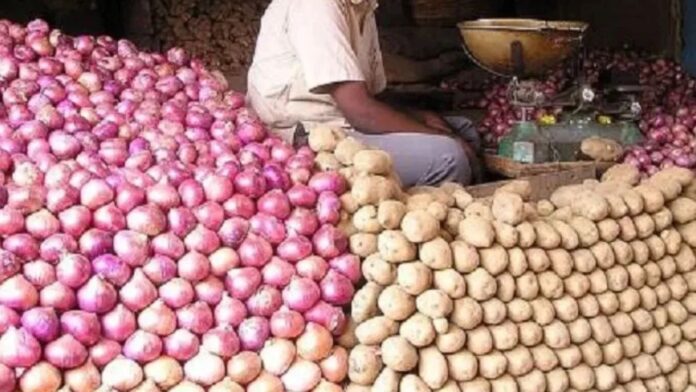The RBI recently said in one of its notes that though inflation has come down in the country, the risk of rising food prices still persists. Following that, a similar report on potato and onion production has now come out, due to which the inflation numbers may rise again. According to the government’s third advance estimate released on Saturday, India’s horticulture production is likely to decline marginally by 0.65 per cent to 353.19 million tonnes in 2023-24. In the second advance estimate for 2023-24 released in June, the total production of horticulture crops was estimated at 352.23 million tonnes.
Decrease in potato and onion production
Onion production is likely to decline by 19.76 percent to 24.24 million tonnes due to low output in key areas. Output of other vegetables such as brinjal, yam and capsicum may also decline. Media reports on September 7 said onion production may decline due to excessive rains forecast by the India Meteorological Department. Potato production is estimated to decline by 5.13 percent to 57.05 million tonnes. These declines may create challenges in controlling prices of two essential commodities, which play a major role in food inflation.
Inflation falls for two consecutive months
India’s retail inflation rose to 3.65 per cent in August, slightly higher than the 3.6 per cent recorded in July. The inflation figures have been in line with the RBI’s target for two consecutive months now. Despite fluctuations in the yield of various crops, the total vegetable production is estimated to remain stable at 205.80 million tonnes. Estimates have shown that there has been a significant increase in the production of tomato, cabbage, cauliflower, tapioca, pumpkin, carrot, cucumber, bitter gourd, parwal and okra.
read this too
Tomato production increased
Due to price increases last year, tomato production rose 4.38 per cent to 21.32 million tonnes. Prices of the kitchen staple soared to Rs 250 per kilogram last year, prompting farmers to expand farming in hopes of taking advantage of higher market prices. Increased tomato production has helped reduce food costs – vegetarian thali declined 8 per cent and non-vegetarian thali 12 per cent year-on-year.
Mango and banana production increased
Fruit production is expected to rise 2.29 per cent to 112.73 million tonnes due to mango, banana and other fruits. While apples, sweet oranges, guavas and pomegranates are expected to see declines, this is unlikely to impact the growth of fruit exports, which will help bridge the gap in export volumes due to the prolonged ban on cereals such as rice and wheat. The government also estimates an increase in production of honey, flowers, crops, spices and aromatic and medicinal plants compared to last year’s final estimate. India’s fresh fruit and vegetable exports rose 14 per cent to $3.65 billion in fiscal 2024.
What did RBI say recently?
Even though retail inflation remains below four per cent for the second consecutive month, food price volatility remains a risk. An article in the Reserve Bank’s September Bulletin also said that domestic consumption is poised to grow rapidly in the second quarter, as gross (headline) inflation is declining and rural demand is also improving. A “State of the Economy” article in the bulletin said that retail inflation remained below the Reserve Bank’s target for the second consecutive month in August. But given recent experience, food price fluctuations remain a contingent risk.

